Raising Water Consciousness through
World’s Biggest Photo Exhibition and
Largest collection of Photo Stories on Water
Photo Stories | Water and Environment
Water for Nature, Life and Development
Nandita Singh and Om Prakash Singh
15 February, 2016
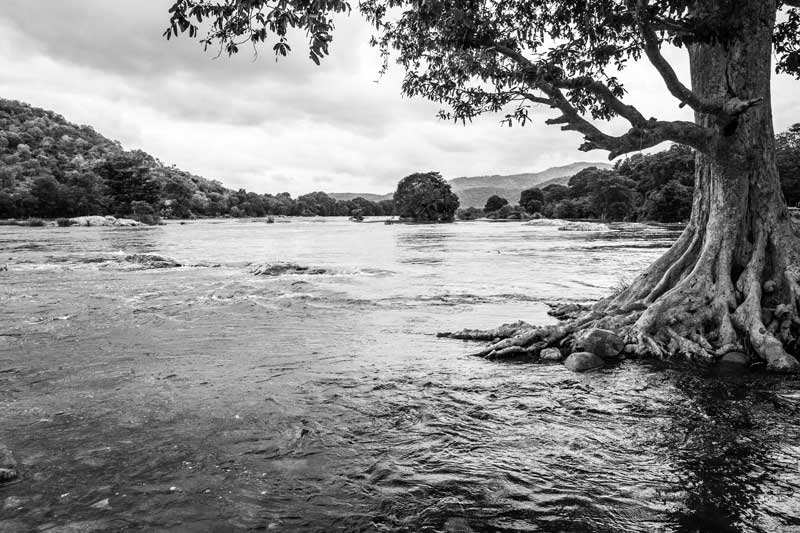
Water is an essential resource for sustaining ecosystems and societies in India. In nature it exists as 'blue' and 'green' water. Blue water is the water in liquid form, such as in rivers, lakes, wetlands and aquifers. Green water refers to water stored in the soil as moisture. As much as 65% of the rainfall received becomes available as 'green' water, while only 35% appears as 'blue' water. Accordingly, against a precipitation estimate of 4000 cu.km in India, estimations for blue and green water are 1650 cu.km and 2350 cu.km respectively. In nature, blue water primarily enables aquatic ecosystems to survive and thrive while green water sustains terrestrial ecosystems such as forests, woodlands and grasslands. Both blue and green water recharge underground aquifers, and also help regulate the natural water cycle. Both forms are essential for life - while blue water enables basic survival of animals and human beings, green water sustains plant life. Water has been the driving resource behind the development of Indian society and culture. The banks of water bodies have served as cradles of human civilization through history. Food production through agriculture, animal husbandry, fisheries, etc. has hinged upon water. Waterways have always served as channels of transportation, connecting people and cultures. Hydropower, an important driver of the present socio-economic development, depends upon water. Industries too rely heavily on water, being the second highest water consumer. Despite the centrality of water for nature, life and development in India, the resource is increasingly coming under stress, with over-use and quality degradation threatening blue water reserves, and large-scale deforestation and major land use changes thwarting green water flows. For sustainable development both blue and green water need to be used and managed wisely. Glimpses of water for nature, life and development in India are presented in this photo story. The title photograph depicts the confluence of rivers Arkavati and Kaveri at Mekedatu, Ramanagara district, Karnataka.
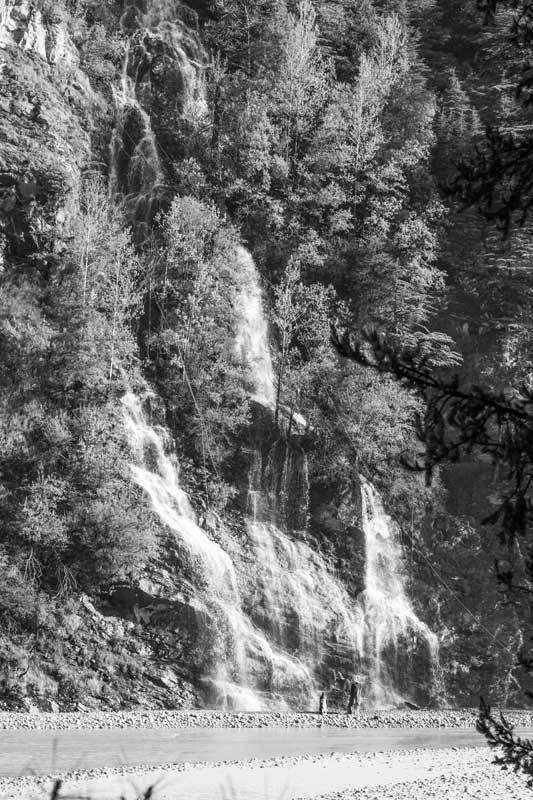
A stream nourishing vegetation on the Himalayas and draining into river Bhagirathi – near Harsil, Uttarkashi district, Uttarakhand
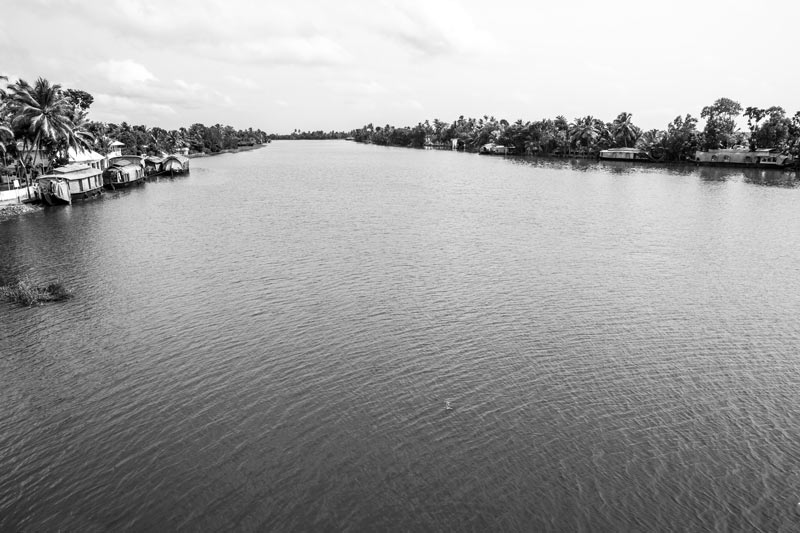
River Pamba in Alappuzha district, Kerala
River Pamba, originating at Pulachimalai Hill in the Peerumedu Plateau, Western Ghats at an altitude of 1650 meters, nourishes dense forests and tangled jungles on the high lands, provides irrigation water in the midland plains and finally feeds the Vembanad Lake, which enables the aquatic biodiversity in the lake to flourish.
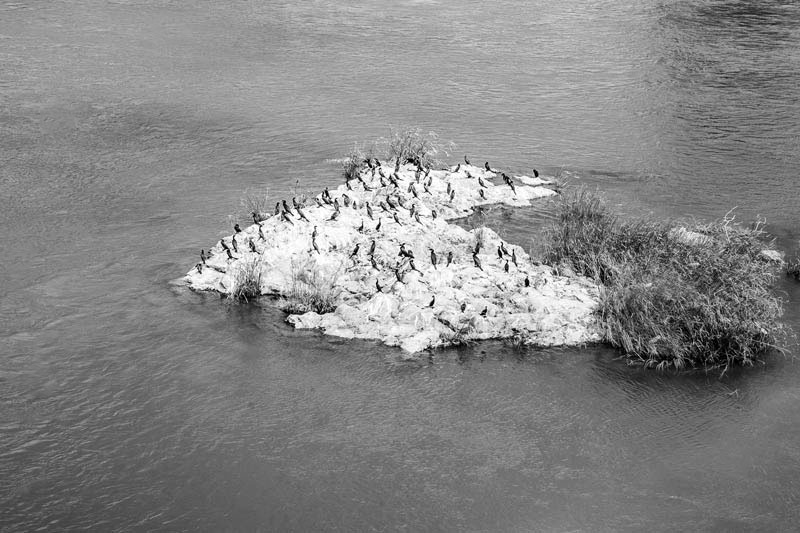
The Indian Cormorant in river Kaveri, Mysore district, Karnataka
Rivers and lakes support aquatic fauna, notably fishes, which serve as an important source of food for birds in their natural habitats. The bird Indian Cormorant often fishes communally, forming a broad front to drive fish into a corner. They are commonly found to fish in inland rivers and large wetlands in Peninsular India.
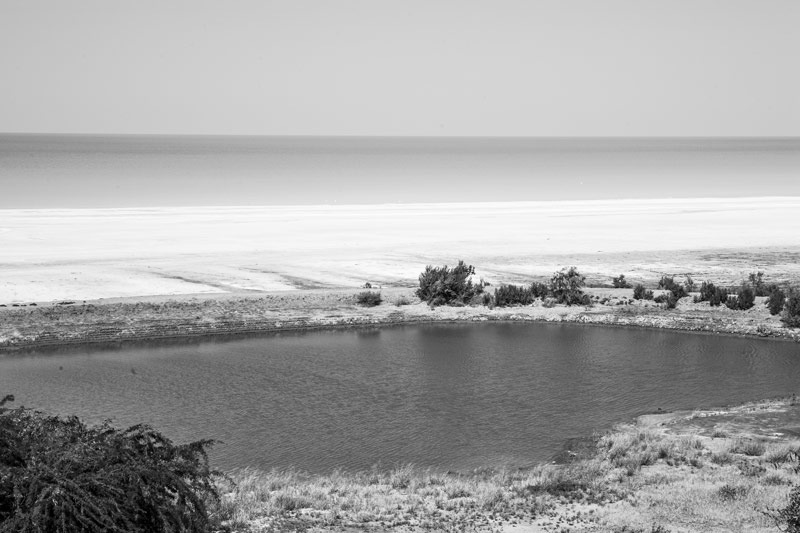
Freshwater amidst salty marshes in Khadir Island, Kutch district, Gujarat
Freshwater is essential for survival of biodiversity. This small freshwater body adjoining salty marshes in the Rann of Kutch is formed by collection of rainwater trickling down the neighboring hills and grasslands. It is of immense importance for survival of wild animals in the area.
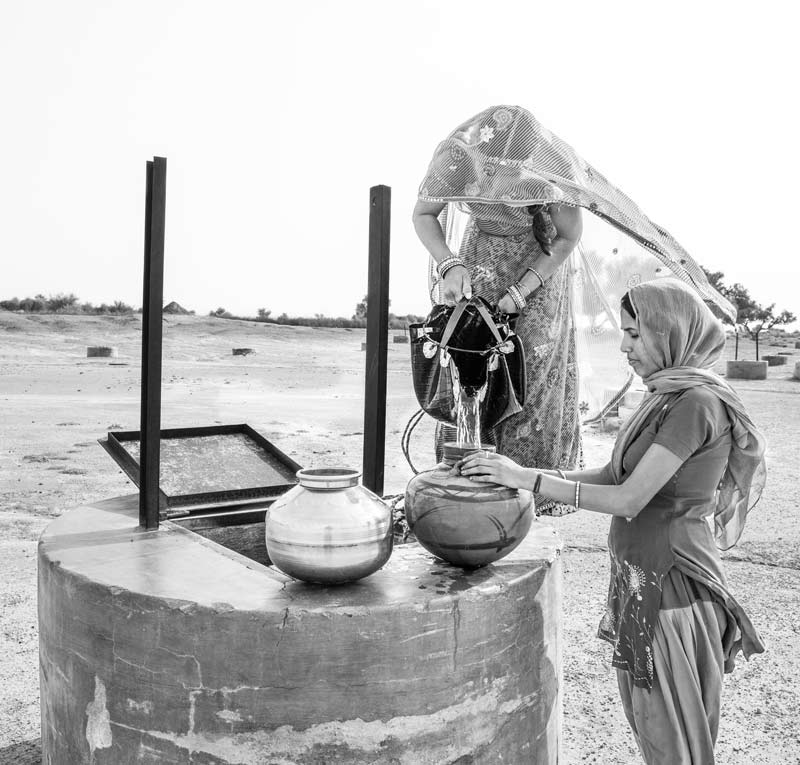
Drinking water being collected from a well in Bikaner district, Rajasthan
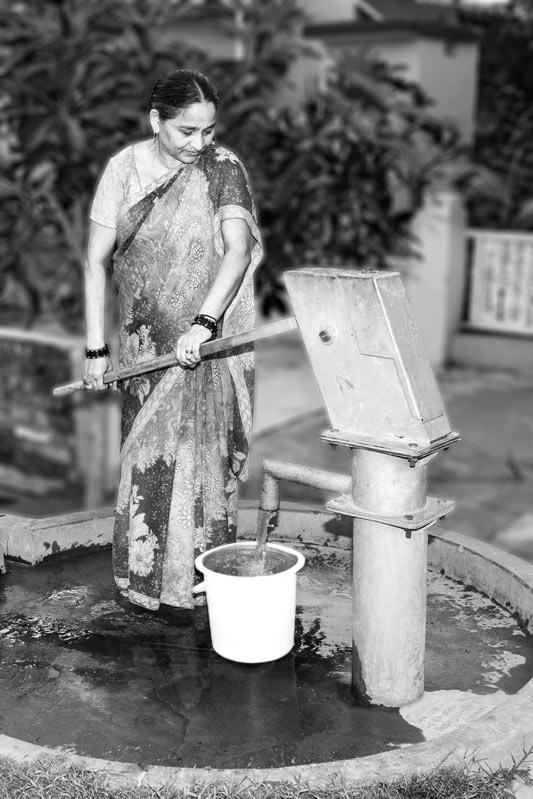
A handpump supplying domestic water in Bareilly district, Uttar Pradesh
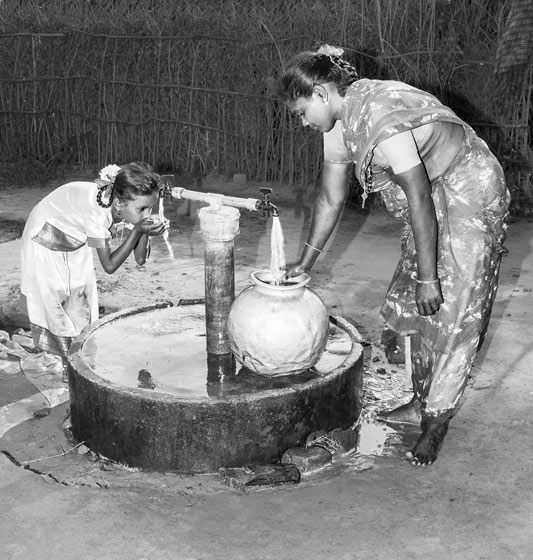
A public tapstand supplying water for drinking and domestic use in Nellore district, Andhra Pradesh
In India, wells, handpumps and piped water supply are the most common sources of water for drinking and other domestic uses. Of these, wells have been the traditional source of domestic water, while handpump and piped water supply are modern additions. Also, while well and handpump are entirely dependent upon groundwater aquifers - shallow or deep, piped water supply can be based upon groundwater as well as surface water resources.
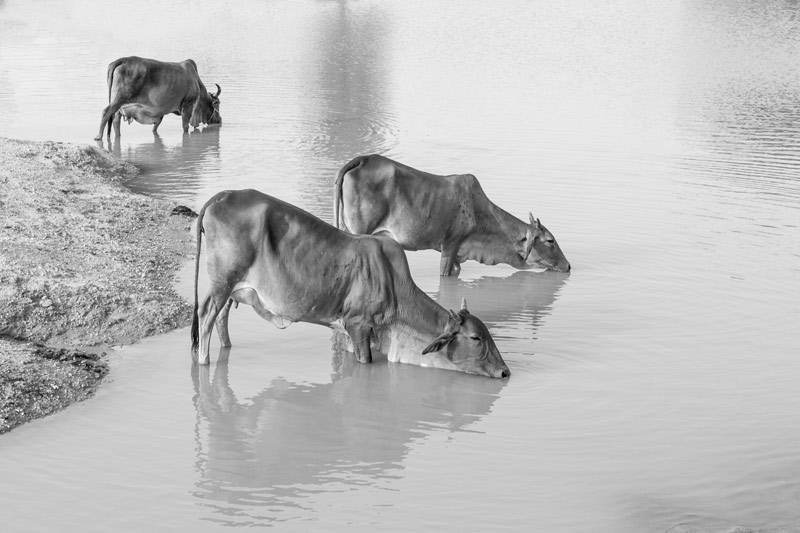
Domesticated cows quenching their thirst at a pond in Bikaner district, Rajasthan
Water is essential for survival of animals, both wild and domesticated. While wild animals depend primarily upon rainwater collected in natural surface water bodies, domesticated animals can additionally access water from manmade sources like ponds, tanks, handpumps and piped water supply.

Fish in Gadisar, Jaisalmer, Rajasthan
Water is life for aquatic fauna. Fishes, amphibians and other aquatic animals cannot survive without proper water habitats.
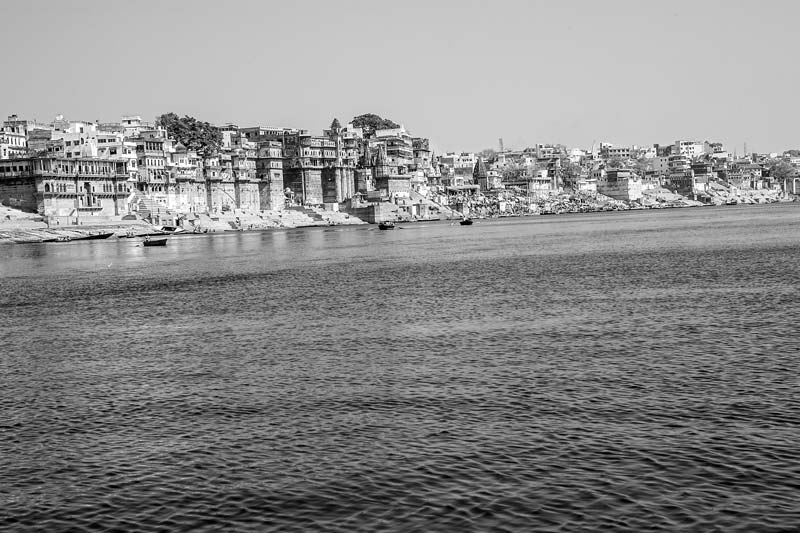
Varanasi city, Uttar Pradesh
Many of the Indian cities – ancient, medieval and modern – have developed along rivercourses. Varanasi – one of the oldest cities of the world – is situated along the banks of river Ganges. This river has contributed through ages to its development as a center of culture, philosophy, education and religion. Varanasi has also grown as an important industrial center famous for its muslin and silk fabrics, perfumes, ivory works and sculpture. It is the religious capital of India.
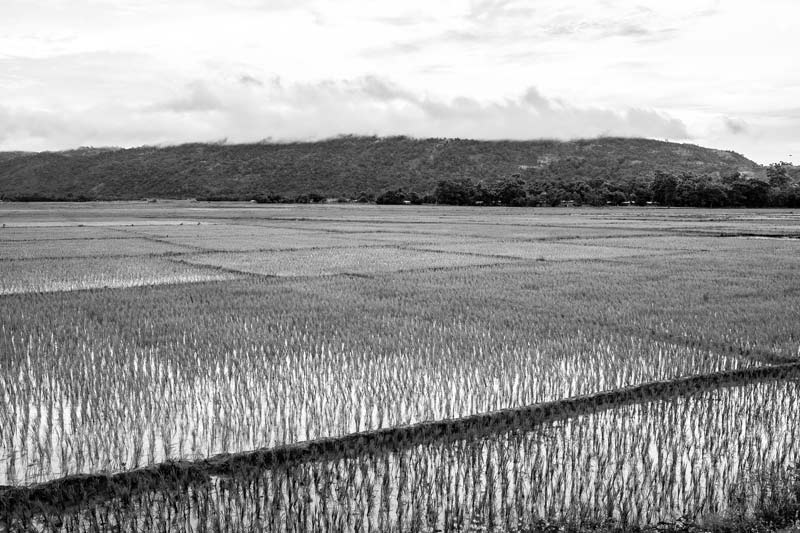
Rainfed paddy fields in Karbi-Anglong district, Assam
Water is essential for producing crops for food. Crop production in India has been either rainfed, which is mainly dependent upon green water, or irrigated, which in turn can be based on blue water in canals or from underground aquifers. Paddy is a water-intensive crop that provides rice which is the staple food in many states of India.
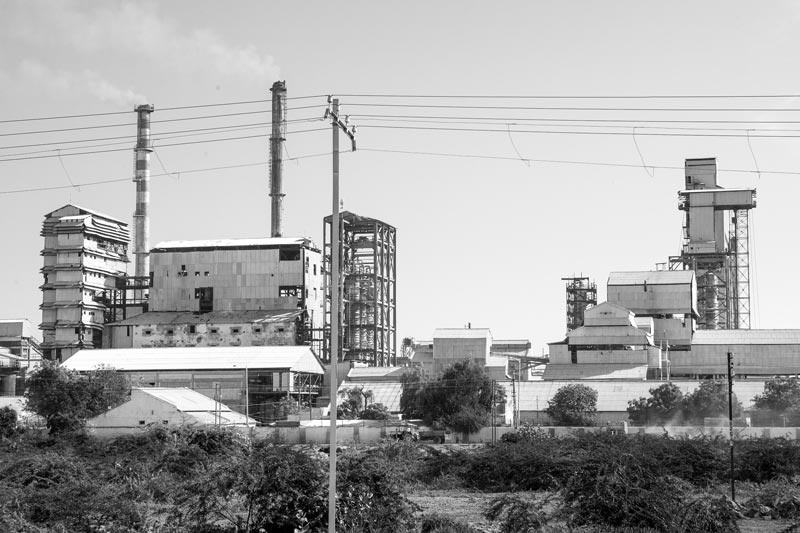
A manufacturing industry in Bhachau, Kutch district, Gujarat
The fulfilment of many needs and interests of human beings is achieved through industrial development and water is a key resource for development and sustenance of industries. In India, industries use about 13% of total freshwater withdrawal. The most important uses of water in industry are for cooling, washing and the production process itself. The industries that produce metals, wood and paper products, chemicals, gasoline and oils are the major water users.
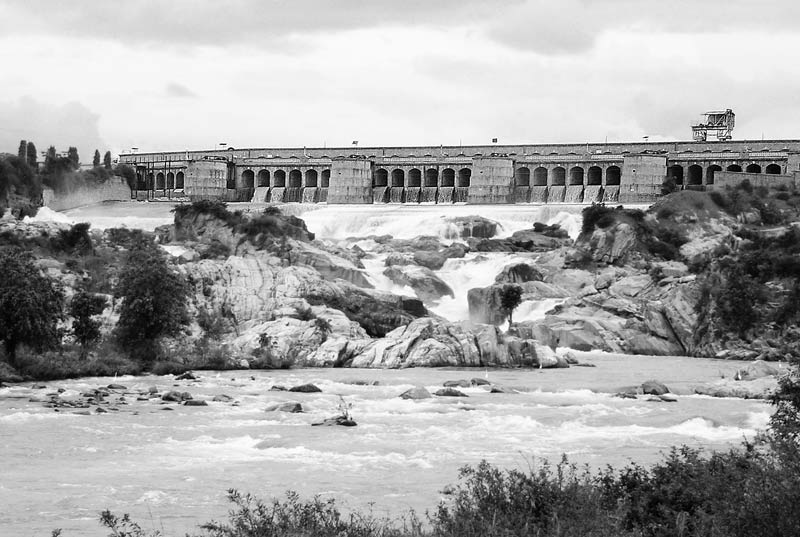
Krishna Raja Sagara Dam which produces hydropower from river Kaveri waters in Mysore-Mandya districts, Karnataka
Electricity is a key to human development, and hydropower is one important source of electricity. The greatest advantage of hydropower is that it is a renewable energy resource, just like solar, wind, tidal and wave energy. In India, up to 15.22% of total electricity generated is hydropower, and the dependence on this energy source is increasing with many new projects being planned and executed all over the country.
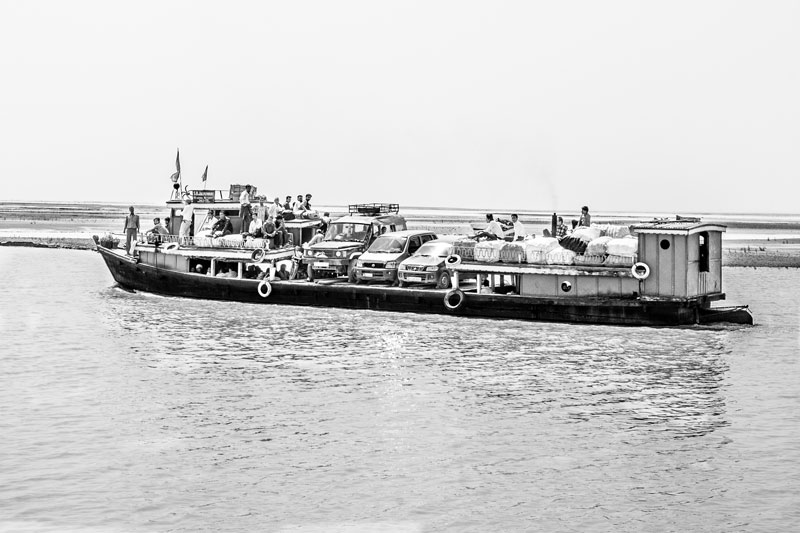
Navigating in Brahmaputra river, Assam
Through times immemorial, waterways have been used for transportation of human beings, animals and goods from one place to another, thus facilitating trade, commerce as well as cultural exchange. In present times, too, marine as well as inland waterways continue to connect countries and habitations. Riverine and inland waterways are particularly important where human habitations are entirely water-locked, as in many places in India. For residents of Majuli – the largest riverine island of India situated in Brahmaputra river – waterway is the only channel of transportation.